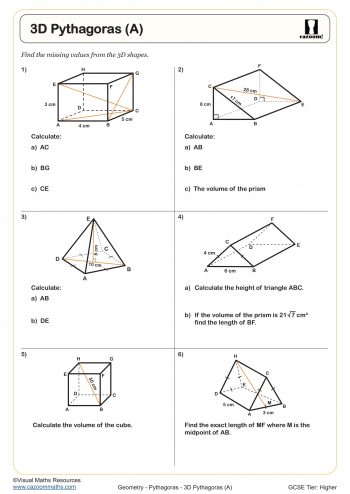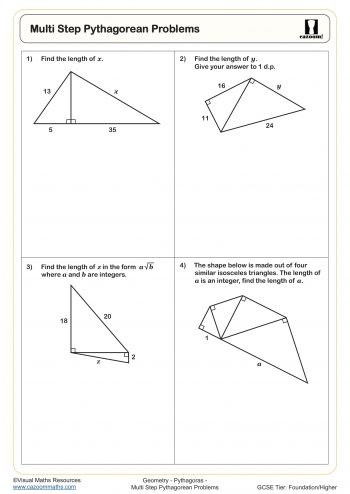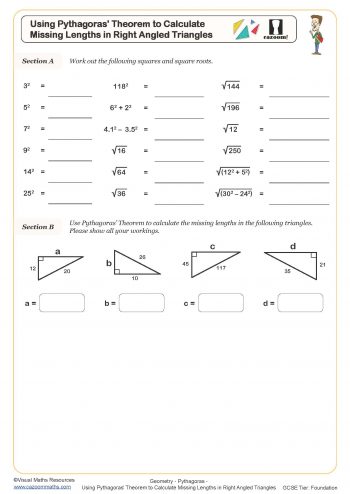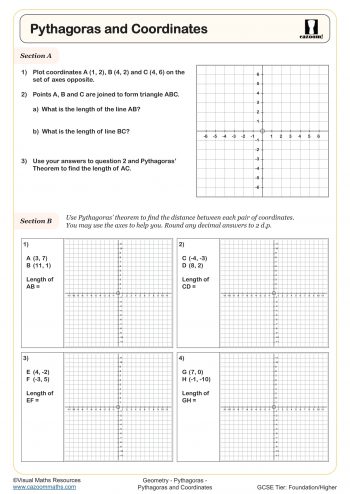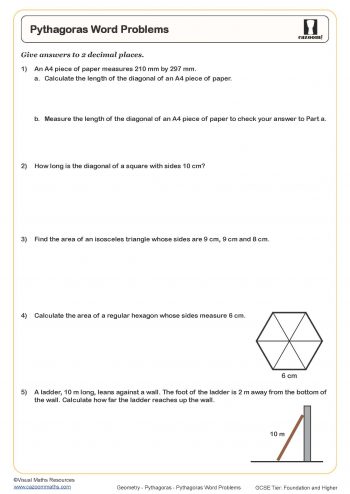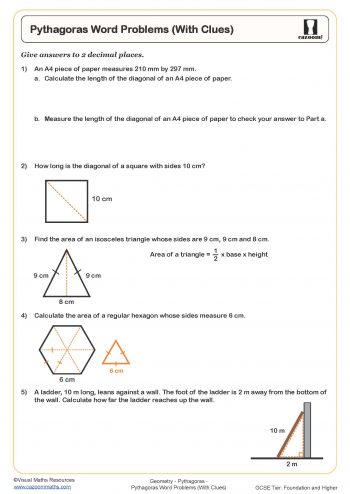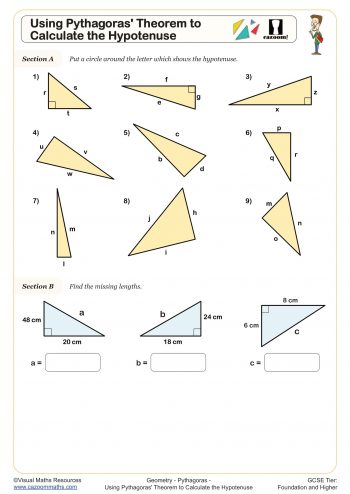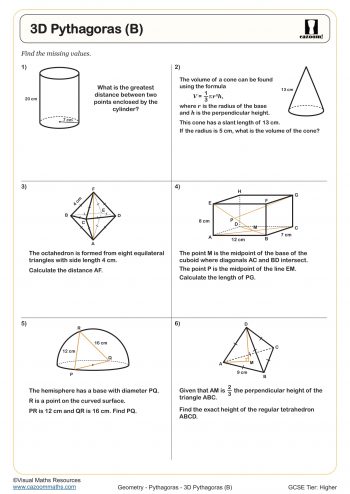KS3 and KS4 Pythagoras Worksheets
Maths Worksheets / KS3 and KS4 Pythagoras Worksheets
We have curated a great range of Pythagoras Worksheets with answers ready for your students to understand the complex concept of Pythagoras Theorem. Understanding this theorem will enable young learners to upgrade their skills related to right-angled triangles, the sum of the squares, the square of the hypotenuse, and other related concepts. This will also help them to solve complicated geometrical equations related to any square root, and missing length of a certain shape as well as identifying the longest side of any geometric shape. Cazoom Maths has provided Pythagoras Theorem-related questions and answers, word problems, and real-life scenario worksheets for KS3 and KS4 students. Our worksheets are fun and engaging and your student will soon be an ace at finding the hypotenuse!
PRINTABLE PDF PYTHAGORAS THEOREM WORKSHEET WITH ANSWERS
Check out and download our Pythagoras Worksheet which will improve your student’s knowledge of various geometrical calculations related to this theorem. These worksheets are created in easy-to-download PDF format, include answers, and are designed to help your students better understand this complex concept of geometry. These Pythagoras worksheets are excellent resources that will make learning fun and exciting, helping young learners improve at solving various critical functions related to Pythagoras Theorem.
What Is Pythagoras Theorem?
Pythagorean theorem is a crucial concept in geometry. It makes it easier to measure the lengths of two smaller sides and calculate units of measurement for any triangle. This theorem explains how in a right-angled triangle, if you square the sides that aren’t the hypotenuse (the longest side of any right-angled triangle), then add them together, you’ll find the area of that triangle. To put it even simpler, we can use the formula C² = A² + B² to calculate this. The Pythagorean theorem is quite practical. For example when we need to see just how far away something is. But beyond that, it’s very important for construction as well, since everything needs balance and stability. Long story short, this timeless maths rule has many real-world applications. Our Pythagoras worksheet will help your students understand these concepts better.
What Are the Properties Of Pythagoras Theorem?
Pythagoras’ theorem, a handy tool in geometry, has essential properties that make it useful. First, it is only applied to triangles with an angle of 90 degrees. Secondly, it can be implemented to find the third side of a triangle when the lengths of the other two sides are given. For example, if we have a triangle with a side of 3 units and another with 4 units and we want to find the third side, Pythagoras’ theorem (3² + 4² = 5²) tells us that it’s a five-unit-long side. If you need more help try using this. This theorem lets us check if a given triangle is right-angled as well. These properties give Pythagoras’ theorem an edge to help us solve geometric problems involving these types of triangles.
Use of Pythagoras Theorem in Real Life
Pythagoras’ theorem has found its way into a lot of things we do. From construction and architecture to even everyday stuff like rearranging furniture! For example,
- Pythagoras Theorem helps builders make right angles and measure diagonals so they can build more stable structures.
- It’s the go-to formula for architects when they’re designing buildings because it fits them with precise dimensions.
- Sailors and hikers use it to find the distance between points on maps.
- You’ll also see it in places you’d never expect like designing bridges and calculating how much weight they can carry.

